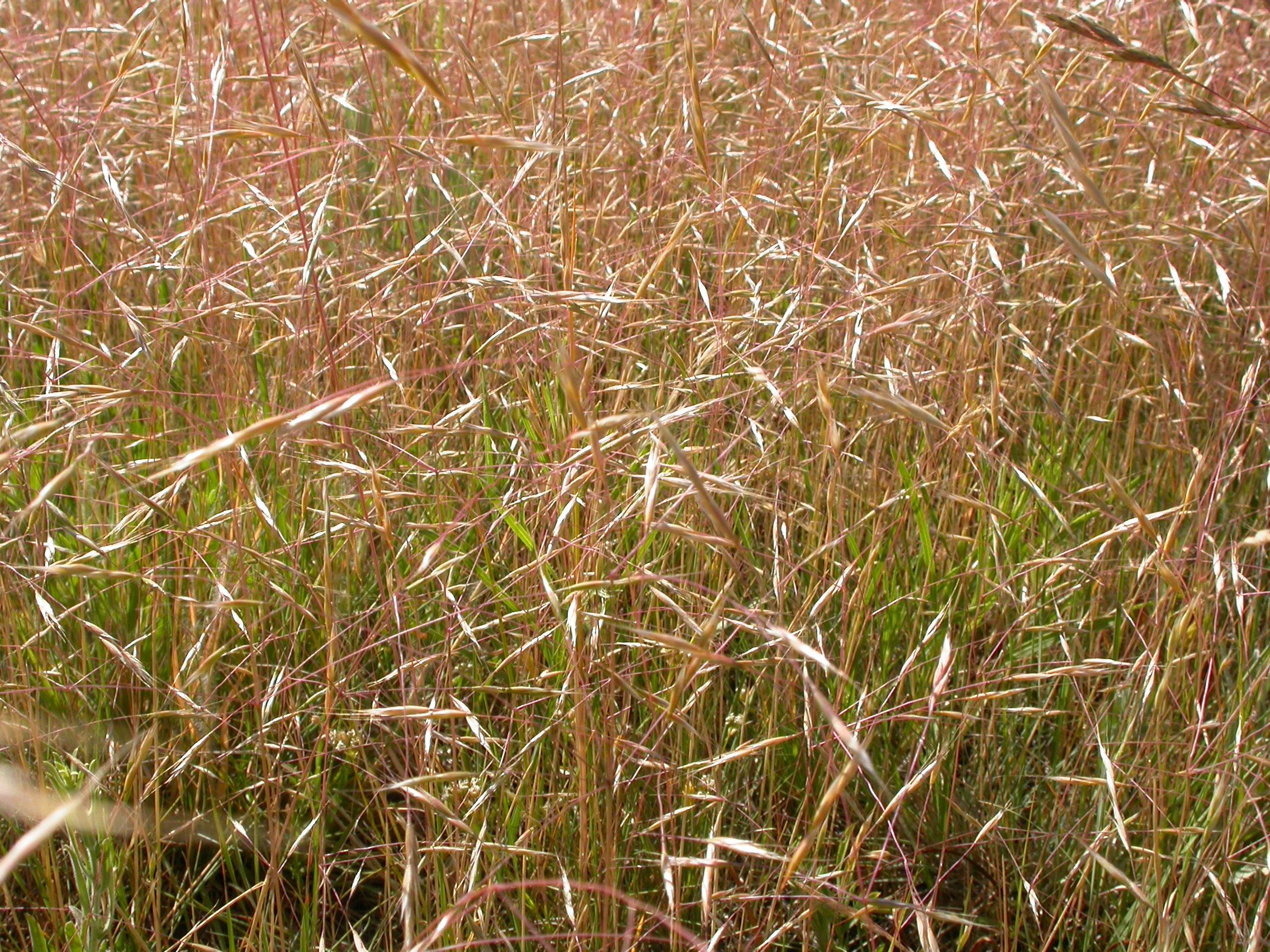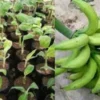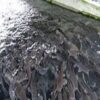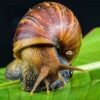Ventenata (Ventenata dubia) is a type of grass. This plant is not native, meaning it didn’t originally grow in certain places. It came from Europe and Asia. People brought it to North America. Now, Ventenata is found in many places across the United States.
This grass looks like other grasses, but it can be a problem. It likes to grow in areas where other plants live. This can cause issues for those plants. Ventenata can take up space and use resources that other plants need.
Farmers and people who take care of land don’t like Ventenata. They call it an invasive species. Invasive means it can spread quickly and harm the environment. Ventenata is good at spreading its seeds, which are like tiny plant babies. The wind can carry these seeds to new places, making more Ventenata plants.
The grass grows in the spring and summer, covering fields and meadows. It has long stems with seeds at the top. These seeds are what help it spread. When the wind blows, the seeds fly away and land in different spots.
Scientists and land managers work to control Ventenata. They try to stop it from taking over. This is important because if Ventenata grows too much, it can crowd out native plants. Native plants are the ones that belong in a certain area naturally.
To control Ventenata, people use different methods. They might use special chemicals to kill the grass. They also look for ways to keep its seeds from spreading. This helps protect the land and keep it healthy for the plants and animals that belong there.
In addition, Ventenata (Ventenata dubia) is a grass that came from other places and now lives in the United States. It grows quickly, and its seeds spread easily, which can be a problem for the environment. People work to control it and keep it from taking over areas where other plants should be.
Read Also: Complete List of Fruits, their Nutritional Values, Benefits and Importance
How To Grow Ventenata (Ventenata dubia)
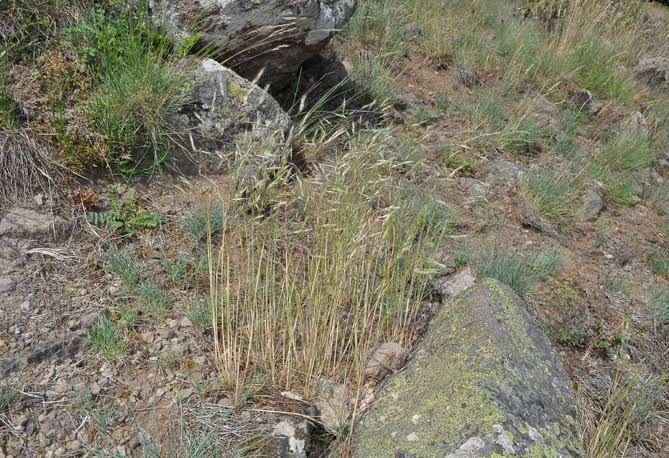
Growing Ventenata (Ventenata dubia) is not recommended because it is considered an invasive species in many areas. However, if you are studying it for scientific or educational purposes and have proper permits, here are general steps:
1. Research and Permits: Before attempting to grow Ventenata, research local regulations and obtain any necessary permits. It may be illegal to cultivate invasive species in some regions.
2. Select a Controlled Environment: If you have the proper permits, consider growing Ventenata in a controlled environment like a greenhouse. This helps prevent the spread of seeds into the natural ecosystem.
3. Soil Preparation: Use well-draining soil suitable for grasses. Ventenata prefers certain soil conditions, so research its specific requirements.
4. Seed Planting: Plant Ventenata seeds in the prepared soil according to recommended spacing. Follow any guidelines provided by experts or research institutions.
5. Watering: Provide consistent and moderate watering. Avoid overwatering to prevent issues like root rot.
6. Light Requirements: Ventenata typically thrives in full sunlight. Ensure that the plants receive adequate sunlight for healthy growth.
7. Monitor Growth: Regularly check for signs of disease or pests. Address any issues promptly to prevent them from spreading.
8. Containment Measures: Implement measures to contain Ventenata and prevent the escape of seeds. This is crucial to avoid the unintended spread of this invasive species.
9. Harvesting (Optional): If your goal is not to promote the spread of Ventenata, avoid harvesting seeds. Instead, focus on observing and studying the plant’s growth and characteristics.
10. Disposal: If you decide to discontinue the cultivation, ensure proper disposal methods to prevent accidental spread into natural environments.
Remember, it’s crucial to prioritize the conservation of native ecosystems, and growing invasive species should only be done under strict supervision and adherence to legal and environmental guidelines. If you’re interested in studying Ventenata, consider collaborating with local environmental agencies or research institutions to ensure responsible practices.
How To Care For Ventenata (Ventenata dubia)
Caring for Ventenata (Ventenata dubia) is generally discouraged due to its invasive nature, but if you are dealing with it in a controlled environment for research or management purposes, here are some guidelines:
1. Identification: Ensure accurate identification of Ventenata to distinguish it from other grass species.
2. Isolation: If growing Ventenata, keep it isolated from natural ecosystems to prevent accidental spread.
3. Monitoring: Regularly monitor the growth and health of Ventenata plants. Look for signs of pests, diseases, or stress.
4. Watering: Provide moderate and consistent watering. Avoid waterlogged conditions to prevent root-related issues.
5. Soil Conditions: Understand the soil preferences of Ventenata. Adjust soil conditions as needed to promote healthy growth.
6. Fertilization (if necessary): Assess the need for fertilization based on soil nutrient levels. However, be cautious, as providing excess nutrients may encourage invasive growth.
7. Containment: Implement measures to contain Ventenata and prevent the escape of seeds. This is crucial to avoid unintentional spread.
8. Pruning (if necessary): If Ventenata shows signs of overgrowth, consider pruning or cutting back to maintain control. Dispose of plant material properly to prevent seed dispersal.
9. Record Keeping: Maintain detailed records of Ventenata growth, interventions, and any observed changes. This documentation is valuable for research or management purposes.
10. Disposal: If you decide to stop caring for Ventenata, follow proper disposal methods to prevent its spread. Do not allow seeds to escape into the environment.
Always prioritize responsible management practices to prevent the negative impact of Ventenata on native ecosystems. If you are dealing with Ventenata in natural areas, consult with local environmental agencies or experts for guidance on proper management strategies.
Read Also: Everything You Need to Know About Citrus Fruits
The Uses of Ventenata (Ventenata dubia)
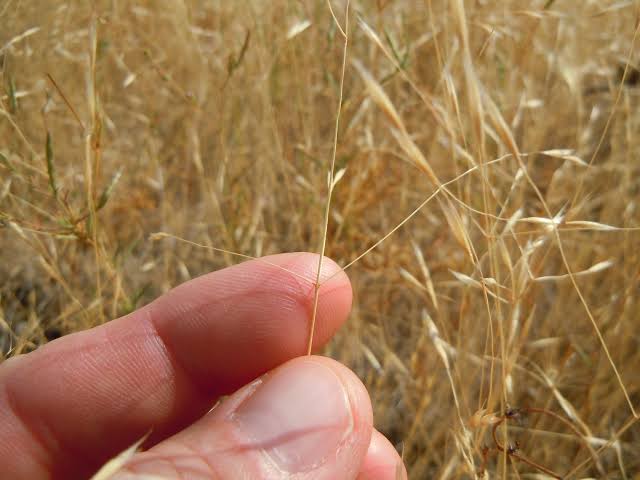
Ventenata (Ventenata dubia) is not widely recognized for positive uses, as it is considered an invasive species in many regions. Invasive species can have detrimental effects on native ecosystems, often outcompeting and displacing native plants. However, here are some aspects that researchers or land managers might consider when dealing with Ventenata:
1. Research and Study: Scientists may study Ventenata to understand its biology, ecology, and behavior. This research can contribute to developing effective management strategies for controlling invasive species.
2. Educational Purposes: In educational settings, Ventenata can be used as a case study to teach students about invasive species, ecological impacts, and the importance of biodiversity conservation.
3. Erosion Control (limited): In some cases, where it is already established, Ventenata may provide limited erosion control. However, this potential benefit is outweighed by its negative impact on native vegetation.
4. Wildlife Habitat (limited): While Ventenata is not known for providing significant wildlife habitat, some animals may use it for cover or nesting. However, the overall impact on wildlife habitat is generally considered negative.
It’s crucial to note that any potential uses of Ventenata should be approached with caution, and the primary focus should be on preventing its spread and protecting native ecosystems. Responsible management practices, research, and education are essential components of dealing with invasive species like Ventenata. If you encounter Ventenata in natural areas, consult with local environmental agencies or experts for guidance on appropriate actions.
Frequently Asked Questions (FAQs)
Q: What is Ventenata (Ventenata dubia)?
A: Ventenata dubia, commonly known as Ventenata, is an invasive grass species that originated from Europe and Asia. It has become established in various regions, including North America, where it poses a threat to native ecosystems.
Q: Why is Ventenata considered invasive?
A: Ventenata is invasive because it can rapidly spread and outcompete native plants. Its ability to produce and disperse seeds efficiently allows it to colonize new areas, negatively impacting local biodiversity.
Q: What problems does Ventenata cause?
A: Ventenata can crowd out native plants, leading to a decline in biodiversity. It competes for resources like sunlight, water, and nutrients, affecting the health of ecosystems. Additionally, its fast spread makes it challenging to control.
Q: How can Ventenata be controlled?
A: Control measures for Ventenata include using herbicides, implementing physical removal methods, and preventing the spread of seeds. However, managing Ventenata is challenging, and efforts often focus on minimizing its impact rather than complete eradication.
Q: Can Ventenata be beneficial in any way?
A: Ventenata is generally not considered beneficial due to its invasive nature. While it may provide limited erosion control, any potential benefits are outweighed by its negative impact on native vegetation and ecosystems.
Q: Is Ventenata harmful to wildlife?
A: Ventenata can negatively impact wildlife by altering habitats and reducing the availability of resources. While some animals may use it for cover, the overall effect on wildlife habitat is considered detrimental.
Q: Can Ventenata be used for landscaping or gardening?
A: It is not recommended to use Ventenata for landscaping or gardening purposes due to its invasive characteristics. Planting and cultivating invasive species can lead to unintended environmental consequences.
Q: What should I do if I find Ventenata in my area?
A: If you discover Ventenata in your area, report it to local environmental authorities. They can provide guidance on proper management practices to help prevent its spread and protect native ecosystems.
Read Also: Best Organic Fertilizer for Vegetables

